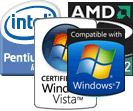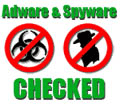-
Different Compression of MPEG
MPEG, short for Moving Pictures Expert Group, is issued by ISO to describe the way audio and video compression and transmission. It consists of MPEG-1, MPEG-2, MPEG-4, MPEG-7 and MPEG-21. Here I focus on MPEG -1, MPEG-2, MPEG-4, MPEG ASP, and MPEG-4 AVC/H.264. One thing I need to mention here is that, if you want to export MPEG videos with DVD Ripper or Video Converter, you need to check into the profiles the program provides and choose the one that just meet your need.
MPEG-1 is the first compression developed by MPEG group back in 1993. It employs coding of moving pictures and associated audio for digital storage media at up to about 1.5 Mbit/s. And this kind of compression is based on re-using the existing frame material and using psychological and physical limitations of human senses. To meet the low bit requirement, MPEG-1 down samples the images, as well as using picture rates of only 24-30 Hz, resulting in a moderate quality.
MPEG-2 is kind of compression for TV broad casting. And it is compression scheme over-the-air digital television ATSC, DVB and ISDB, digital satellite TV services like Dish Network, digital cable television signals, SVCD, and DVD.It is meant for high-bandwidth/broadband usage. All DVDs are distributed with video in MPEG-2 format, regardless of whether it is PAL or NTSC. The maximum bit rate available for MPEG-2 streams are 10.08 Mbit/s and the minimum are 300kbit/s.
MPEG-4 is one of the latest (audio and video) compression method standardized by MPEG group, designed specially for low-bandwidth (less than 1.5MBit/sec bitrate) video/audio encoding purposes. MPEG-4 is a group name for several flavors of video and audio encoding methods that share certain same characteristics. These "flavors" are often referred either as "profiles" or "layers". The best-known MPEG-4 video encoders are called DivX and XviD, which both are nowadays fully standard-compliant MPEG-4 encoders. MPEG-4 moves closer to computer graphics applications.
MPEG-4 Part 2 is a Moving Picture Experts Group standard belonging to the MPEG-4 group of standards that also includes AVC, but it lacks the advanced technology for which AVC (Advanced Video Coding) is named, including CABAC. The best known implementations of MPEG-4 Part 2 are the DivX and XviD codecs. MPEG-4 Part 2 (ASP and SP) was originally designed with video conferencing and other relatively primitive types of video.
MPEG-4 Part 10 is a standard for video Compression. MPEG-4 Part 10 was designed specifically with High Definition (HD) video for home theater applications in mind as one potential application. It also includes specifications for lower quality video for portable devices, allowing a single standard to be compatible across a wide variety of devices and applications. defines video encoding that's equally useful for low resolution/bitrate players like mobile phones and media players, medium resolutions and bitrates comparable to Standard Definition (SD) DVD, to high definition movie encoding for HDTV, Blu-ray, and HD DVD. AVC is divided into a number of profiles, primarily to define what features a particular device or class of devices (like 3G phones for example) supports.
Related Article:
How to convert DVD to MPEG
Top Free Methods to Playback H.264/MPEG-4 AVC Video
Free Trial
DVD Ripper (6.16MB)Buy Now
DVD Ripper (Only $35)
- Operating System: Windows XP/2003/Vista
- DirectX Version: 9.0 or above
- Memory: 64MB at least
- Processor: Intel Pentium Ⅲ processor at 500 MHz
- Hard Disc Space: 512MB or above
- Optical Drive: DVD-ROM

Pavtube Catalogue




Why choose Pavtube?
- Fully functional
- Free technical support
- Five-Star awards
- Free updates
- Excellent service


